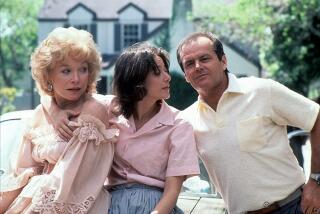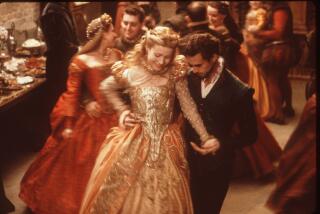No Gritty ‘Woman’
In “Pretty Woman,” Julia Roberts makes the transition from Hollywood Boulevard hooker to chic fashion-plate, thanks to a generous corporate exec (Richard Gere). Quite a metamorphosis--but not as dramatic as the one the film’s screenplay made.
The Pygmalionish story began as a dark, realistic drama with a downbeat ending--Prince Charming dumps her back on the street where he found her. In fact, says first-time screenwriter J. F. Lawton, he first penned the script--then called “3000,” a reference to the amount of money the woman’s paid--as “an anti-Cinderella” story. The primary theme: “The idea that men would rather buy women than respect them.”
But when Disney’s Touchstone Pictures opens “Pretty Woman” Friday, you’ll be treated to something completely different.
Lawton says Disney at first “just wanted to lighten it a little bit. They wanted to give the woman some kind of victory . . . or (have) her end up with a new life, like running a day care center.”
Lawton fought the inevitable happy ending, but lost the battle. As he and other hired hands put the script through revisions, the story became increasingly sanitized--including erasing the prostitute’s drug use. And Lawton’s tough theme pretty much disappeared, he says.
The film is now largely a comedy, with romance--”it’s become the ‘Turner & Hooch’ of the ‘90s,” Lawton says.
A film editor for six years, working mostly with B-type pictures, Lawton’s philosophical about the experience.
“When you sell a script, it’s theirs,” he says. “You’ve got to accept what happens to it.”
More to Read
Only good movies
Get the Indie Focus newsletter, Mark Olsen's weekly guide to the world of cinema.
You may occasionally receive promotional content from the Los Angeles Times.










